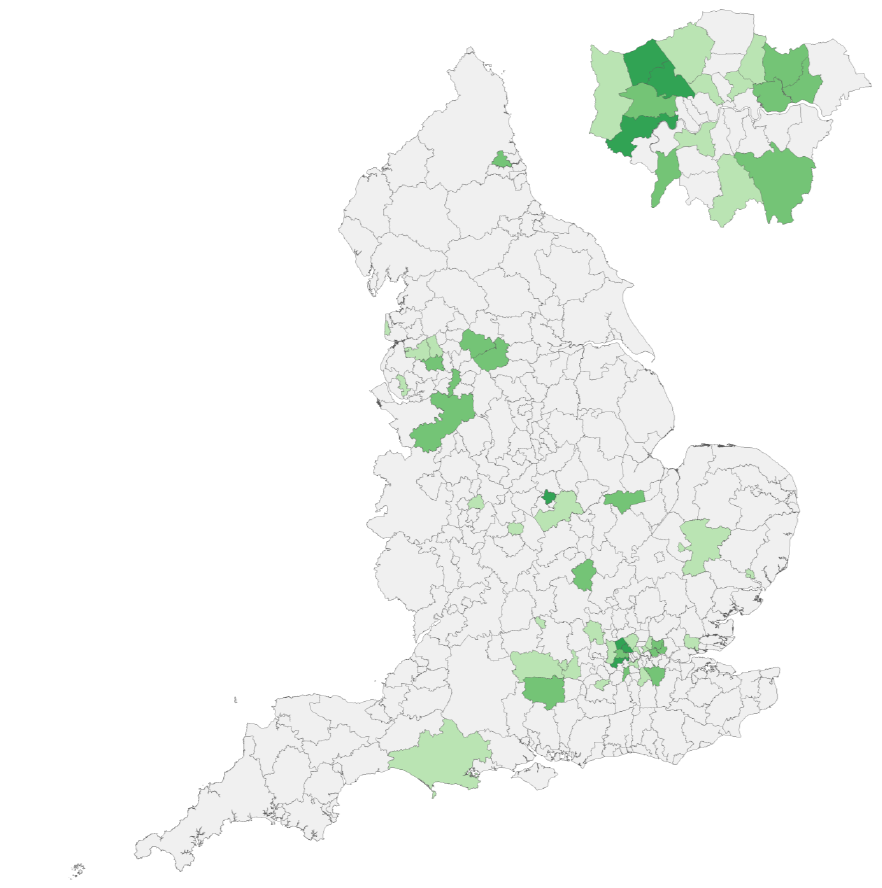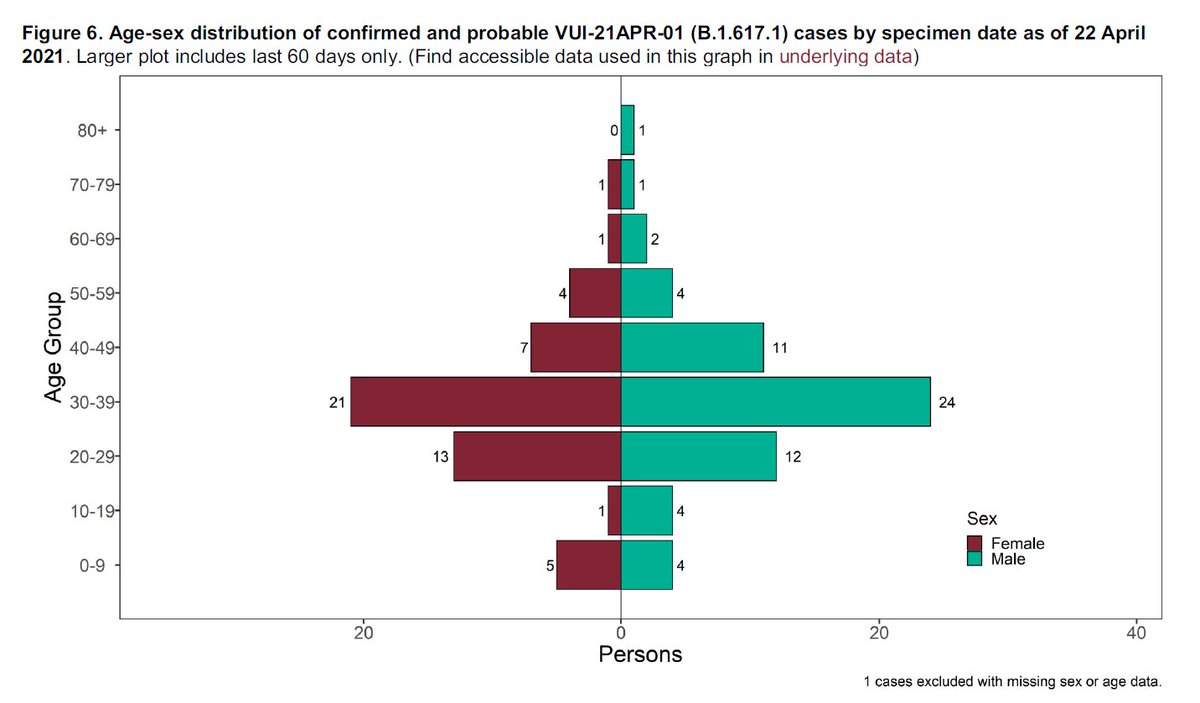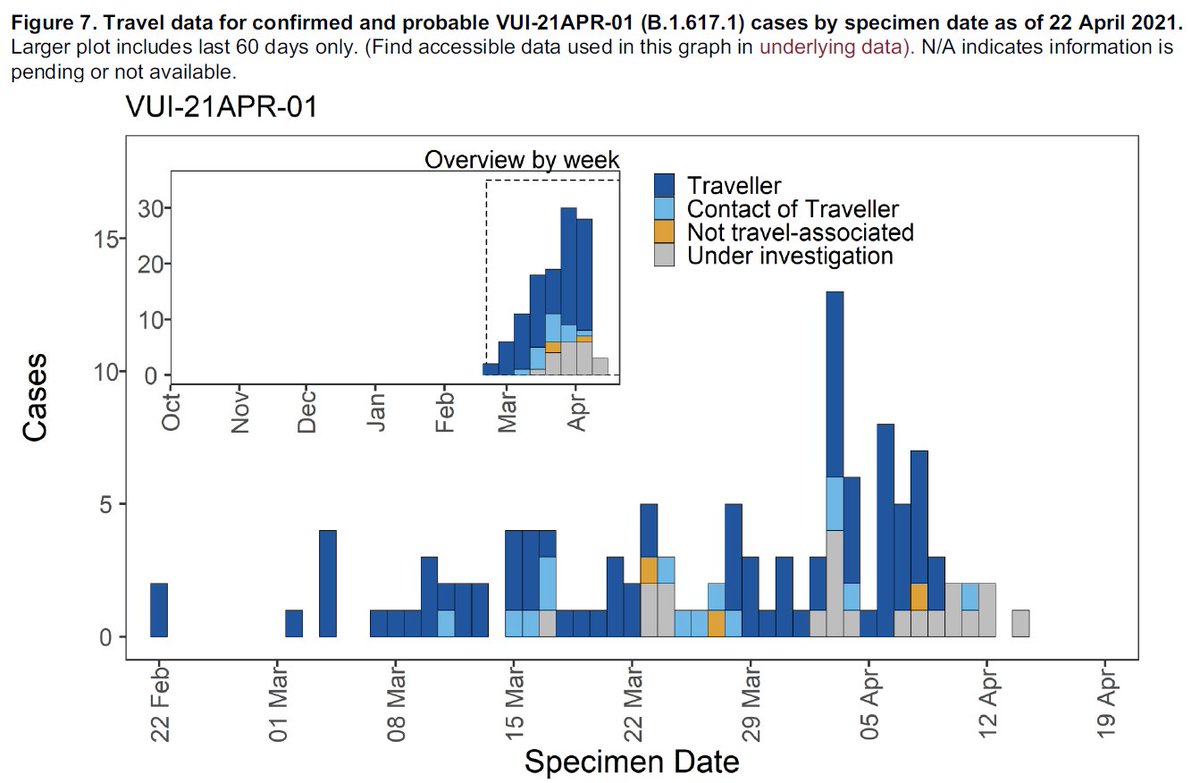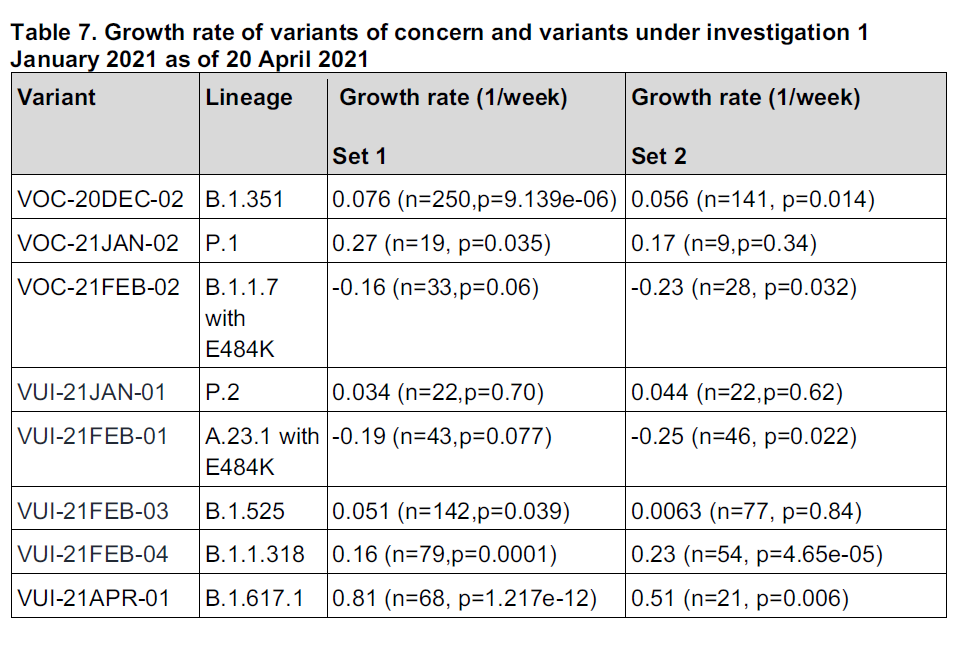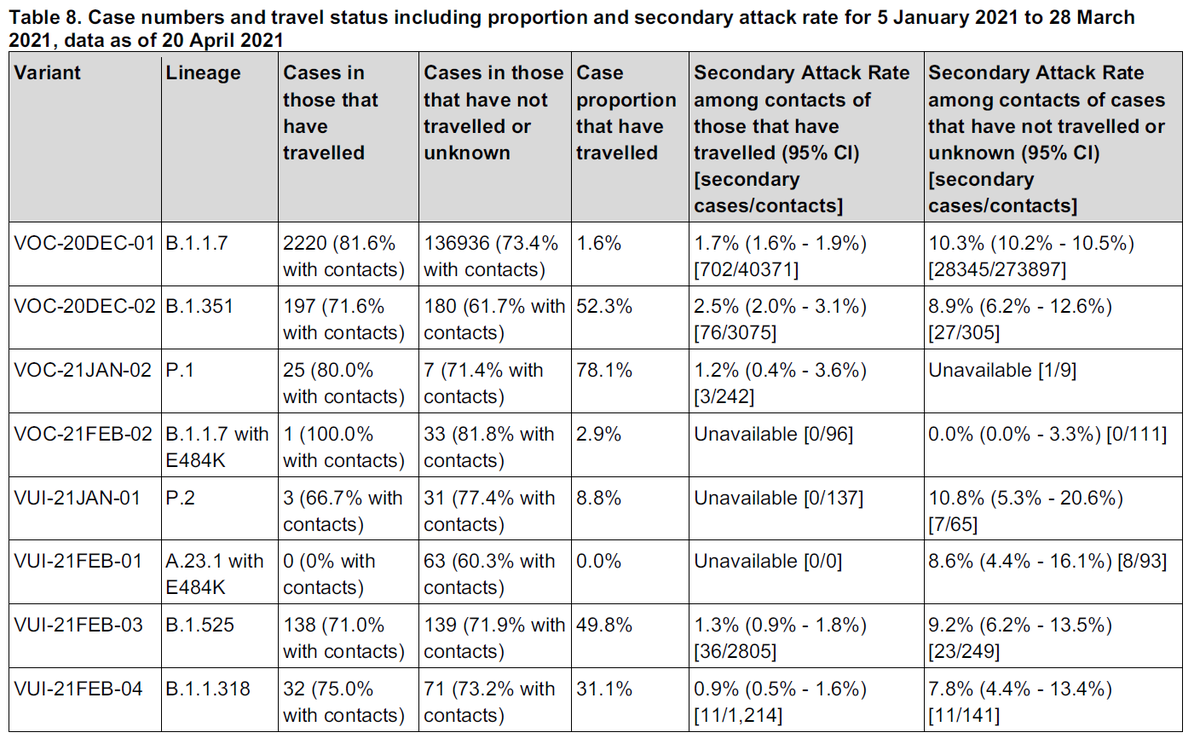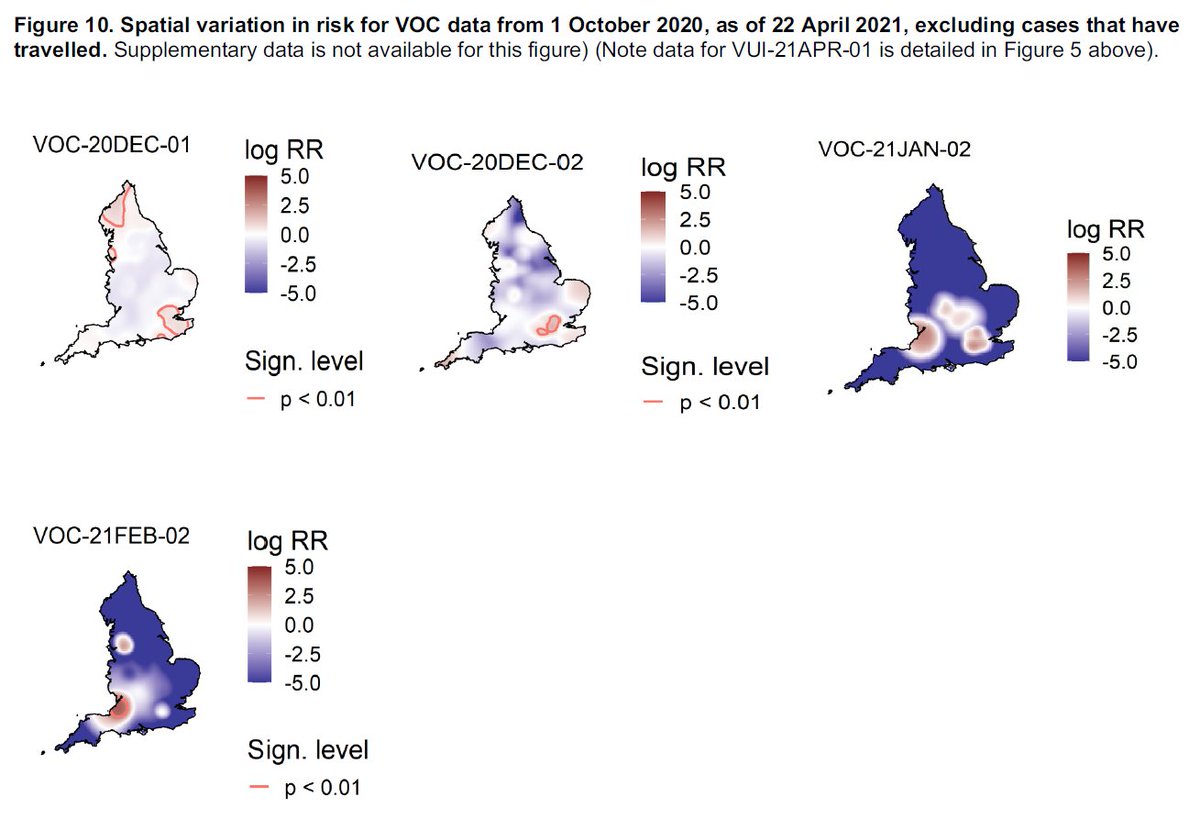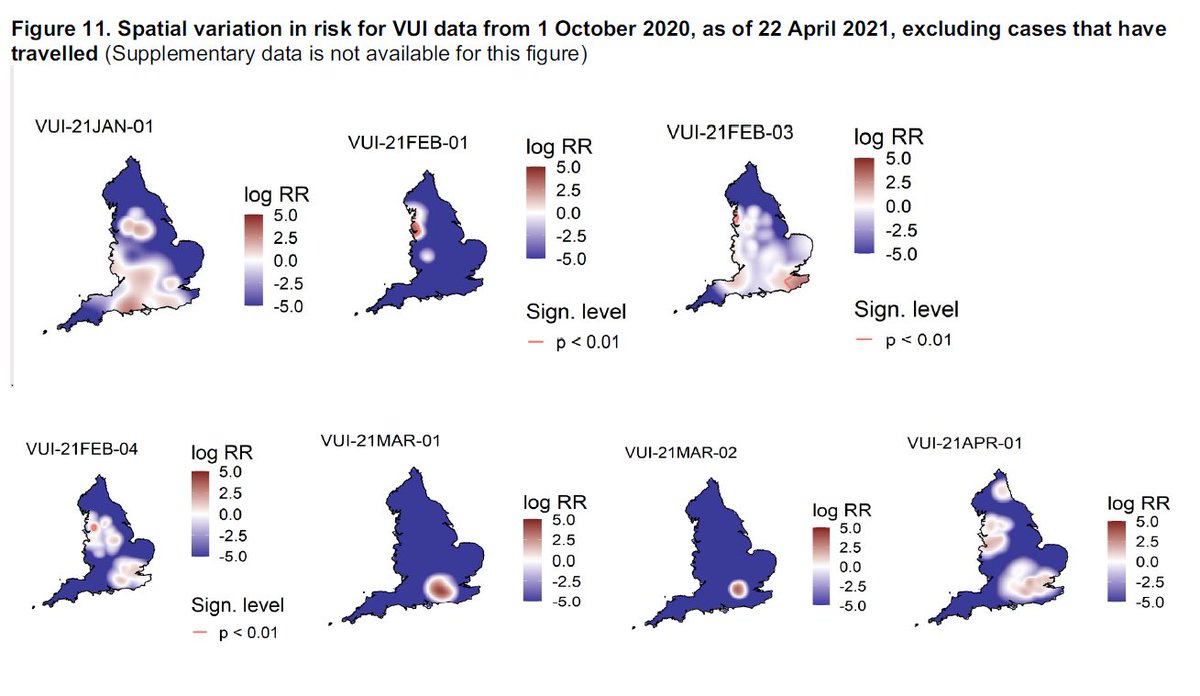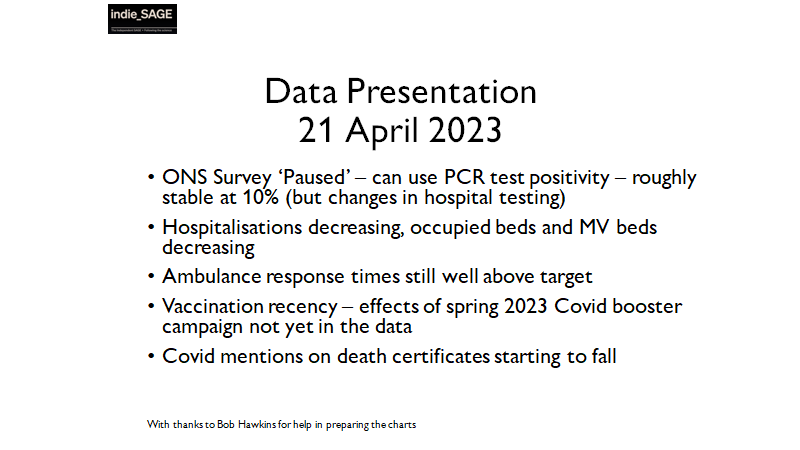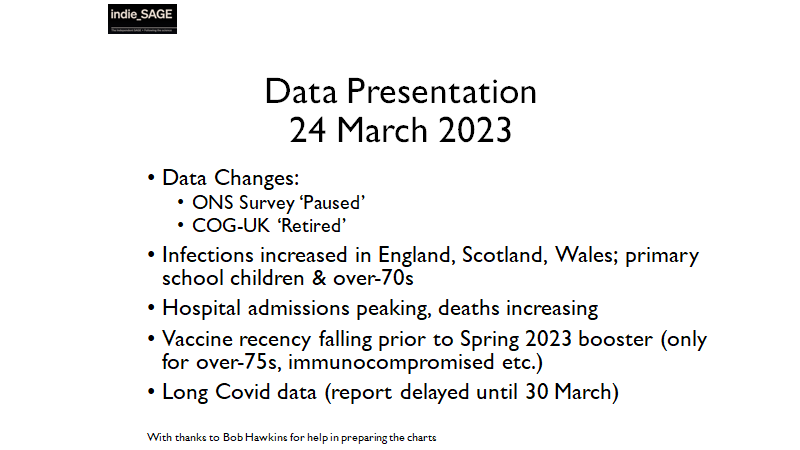Public Health England have updated their analysis of Variants of Concern and Variants under Investigation. It is great that this expert analysis has been published.
Some commentary.
Some commentary.
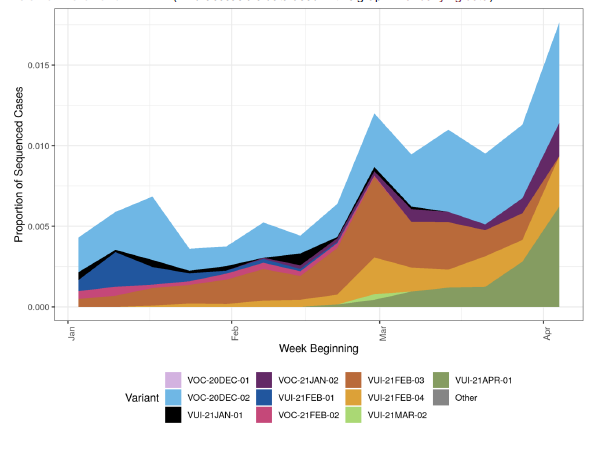
Firstly, the India variant (B.1.617). This has been split. Only B.1.617.1 with E484Q is a Variant under Investigation.
Variants of Concern remain
B.1.1.7 (UK/Kent)
B.1.351 (South Africa)
P.1 (Manaus)
B.1.1.7 with E484K
Several other variants are being monitored.

Variants of Concern remain
B.1.1.7 (UK/Kent)
B.1.351 (South Africa)
P.1 (Manaus)
B.1.1.7 with E484K
Several other variants are being monitored.
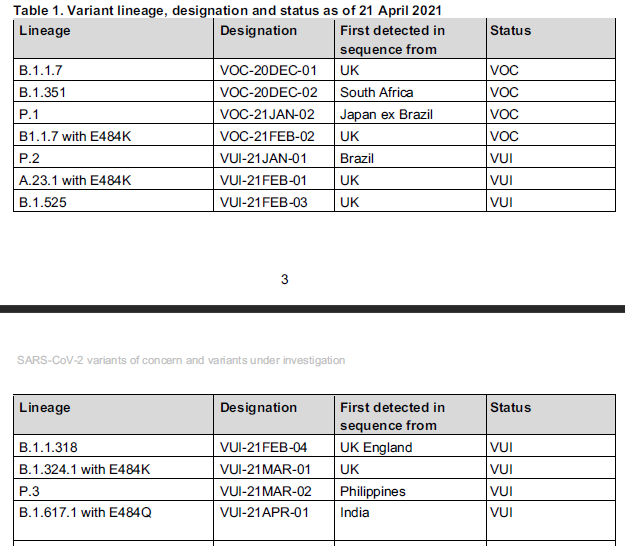
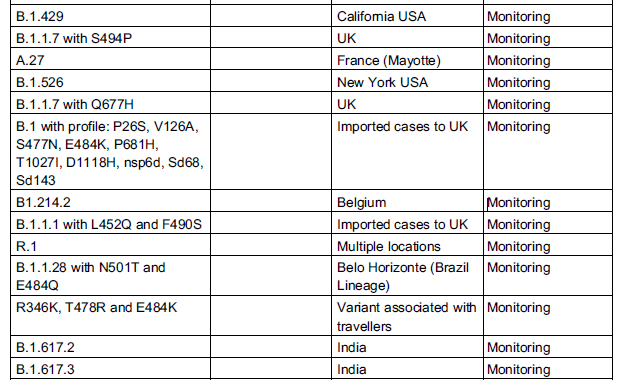
This is PHE's chart of variant prevalence. As you can see, B.1.1.7 (Kent variant) dominates (purple) 
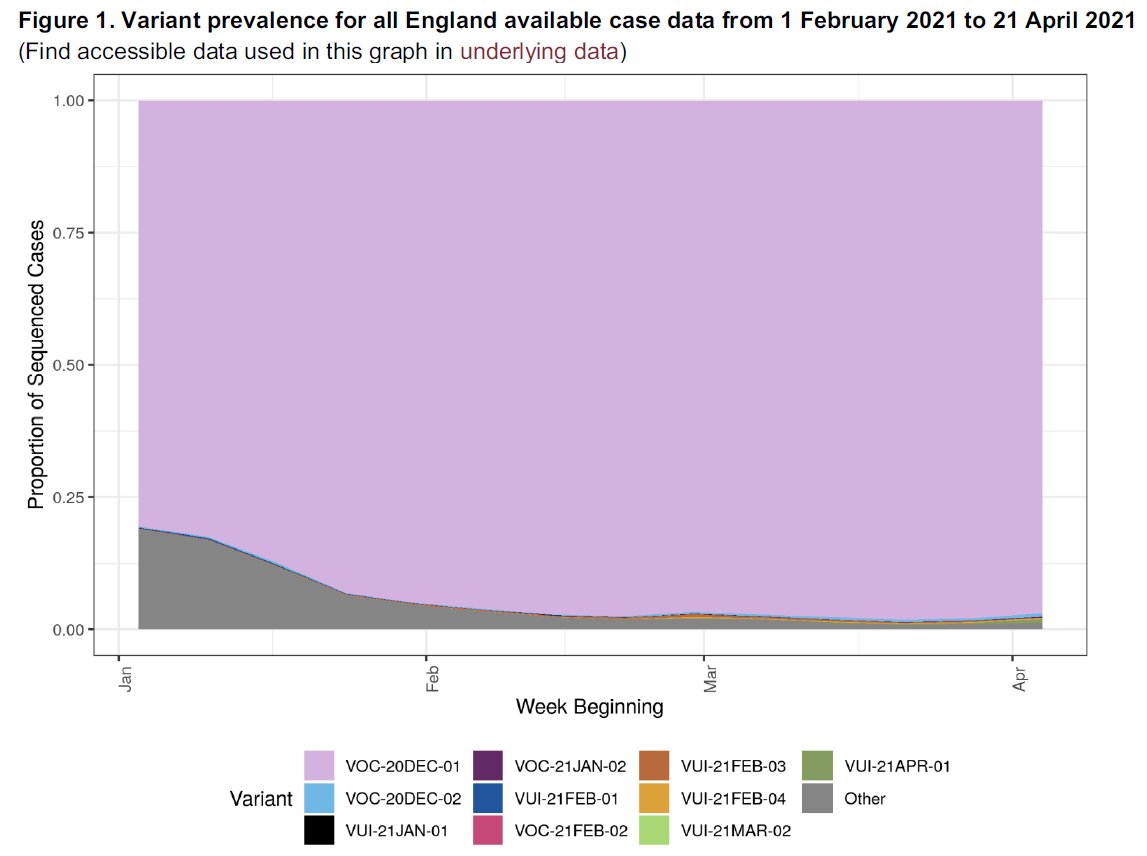
Excluding B.1.1.7 (Kent variant) you can see that there are a range of variants detected since January
B.1.351 (South Africa) in blue
B.1.617.1 with E484Q (India, variant under investigation, a sub-category of B.1.617) in green
The scale goes up to 0.015 or 1.5% of sequences
B.1.351 (South Africa) in blue
B.1.617.1 with E484Q (India, variant under investigation, a sub-category of B.1.617) in green
The scale goes up to 0.015 or 1.5% of sequences
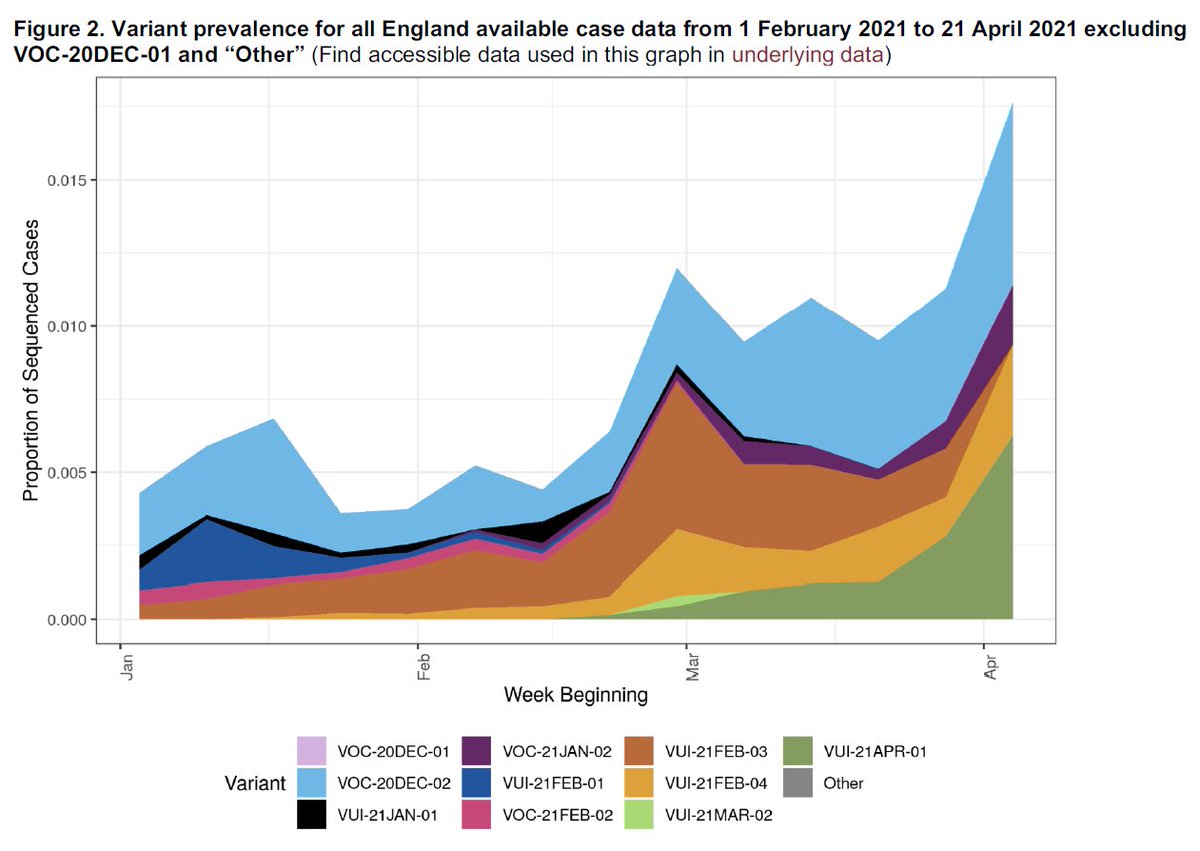
This is where the India variant under investigation has been found in England.
Some regions have 100% of cases where they have been from travellers.
Some regions have 100% of cases where they have been from travellers.

These are the deaths associated with variants of concern and variants under investigation. Note no deaths reported as at 22 April 2021 for the India variant.
Note case fataility rate for VUI-21FEB-03 though. But there are wide confidence intervals for all these.
Note case fataility rate for VUI-21FEB-03 though. But there are wide confidence intervals for all these.
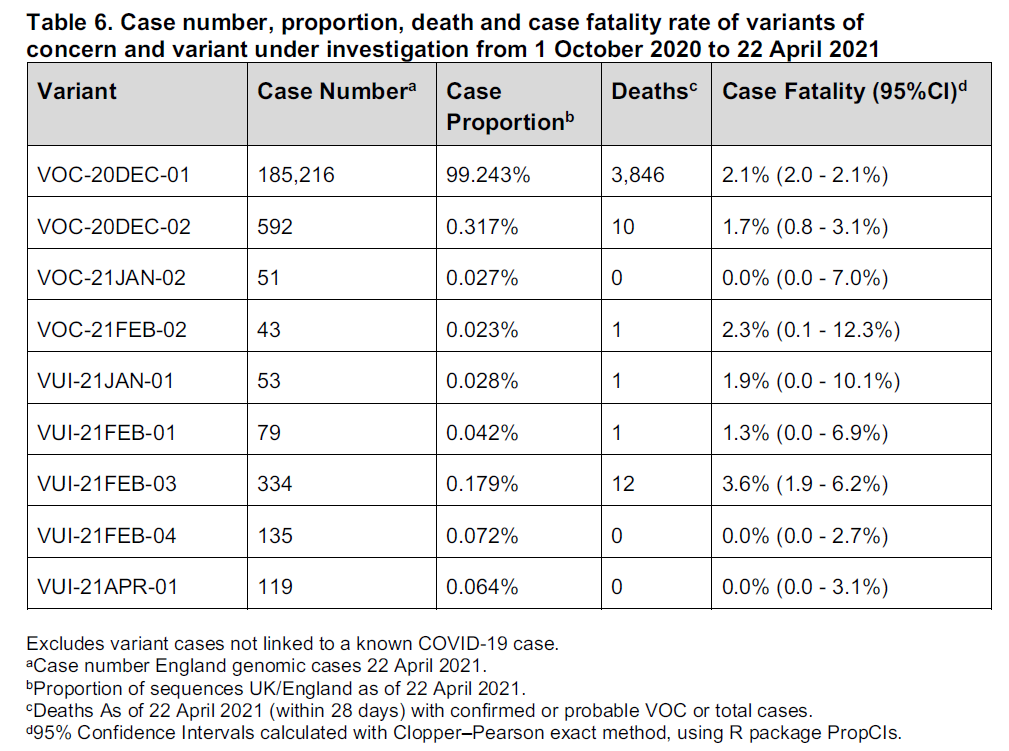
Finally, on to the *risk assessment* for these variants
VOC-20DEC-01 (B.1.1.7)
High risk, but we knew that - that's why we had Lockdown 3 - the Kent/UK variant.
VOC-20DEC-01 (B.1.1.7)
High risk, but we knew that - that's why we had Lockdown 3 - the Kent/UK variant.
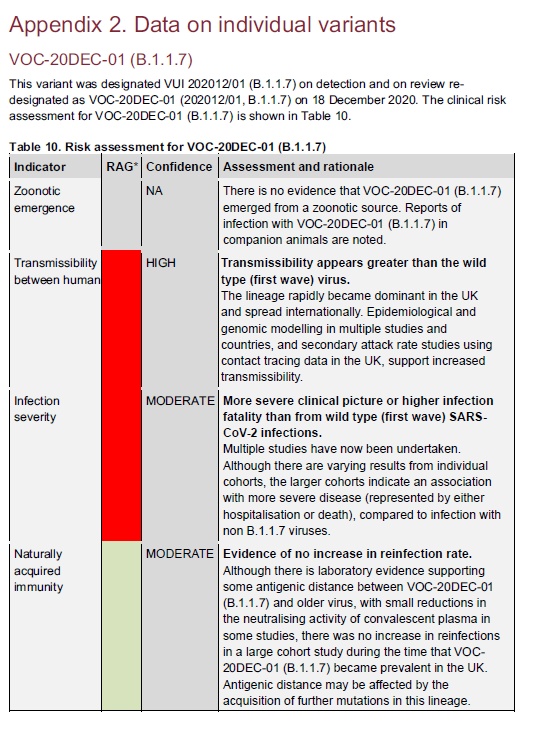
Risk assessments appear to be ongoing for the B.1.617 (India) variant.
So, in summary
- Yes, we have the India variant
- Vast majority of cases are from travellers
- Risk assessment is ongoing
"Numbers of all variants under investigation remain low"
So, in summary
- Yes, we have the India variant
- Vast majority of cases are from travellers
- Risk assessment is ongoing
"Numbers of all variants under investigation remain low"
Finally, @PHE_uk is full of experts, calling on expertise from virologists, immunologists, and many others.
Immunology and virology are *very tricky* and, as with science generally, rigorous, methodical investigation is required to produce robust analysis.
Many thanks.
Immunology and virology are *very tricky* and, as with science generally, rigorous, methodical investigation is required to produce robust analysis.
Many thanks.
Here are my charts of cases from data published earlier today
https://twitter.com/Dr_D_Robertson/status/1385266695682592773
Oh, and for anyone that's confused between the *many* ways that the variants are described (and that's most of us), here's a handy table I made cross-referencing the different ways the Variants of Concern and Variants under Investigation are known. 

• • •
Missing some Tweet in this thread? You can try to
force a refresh

